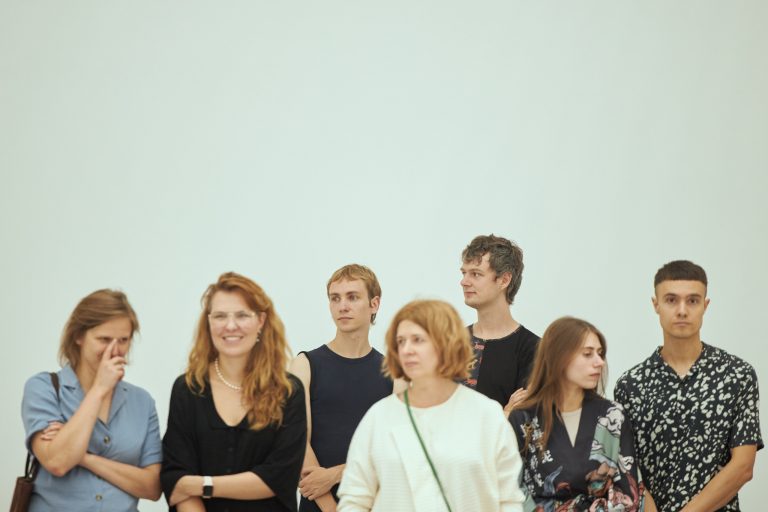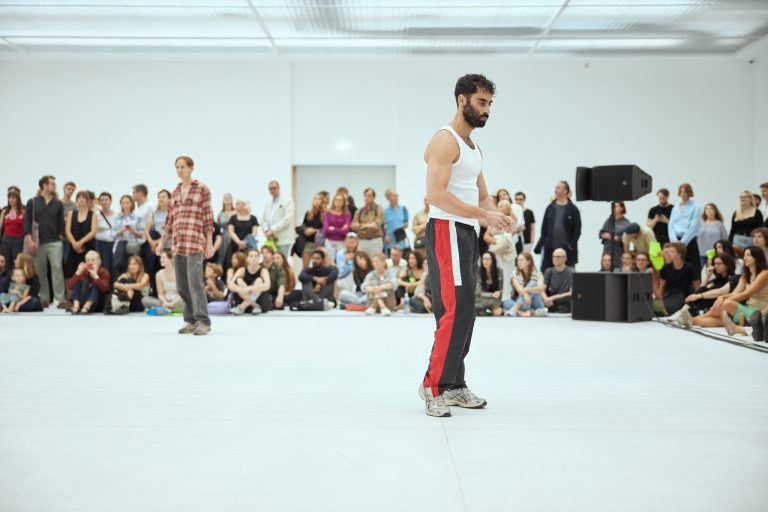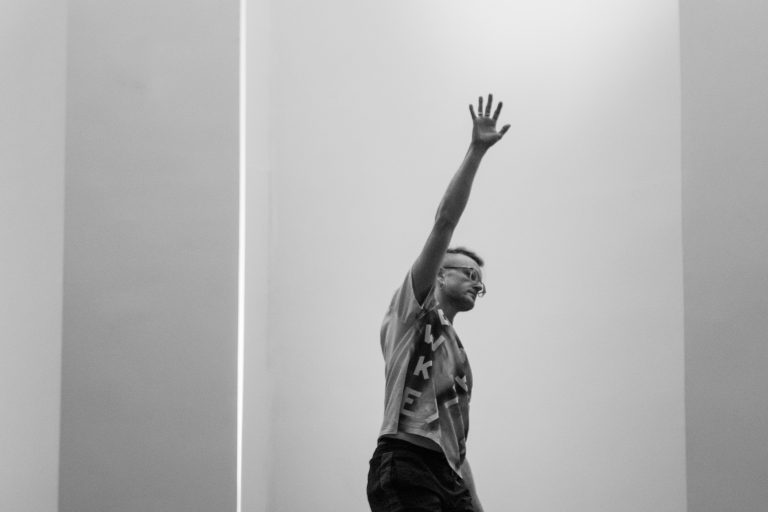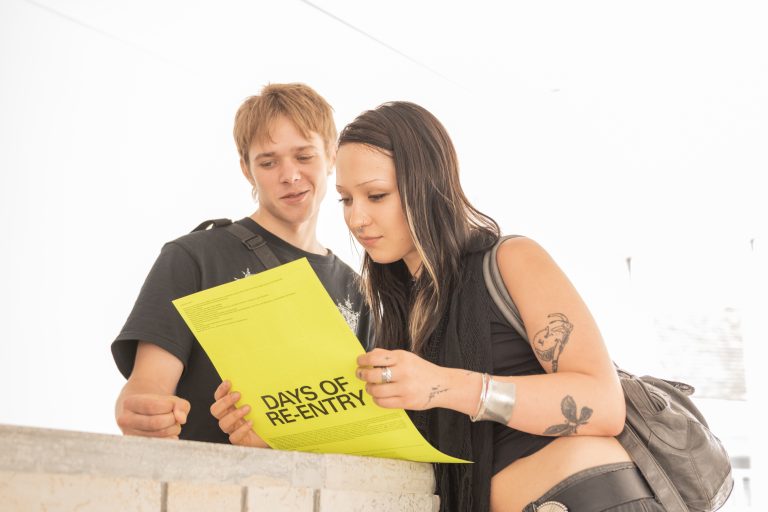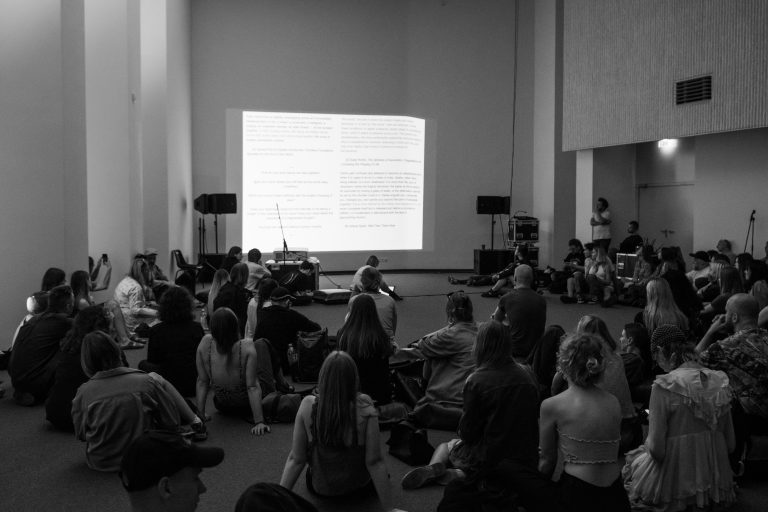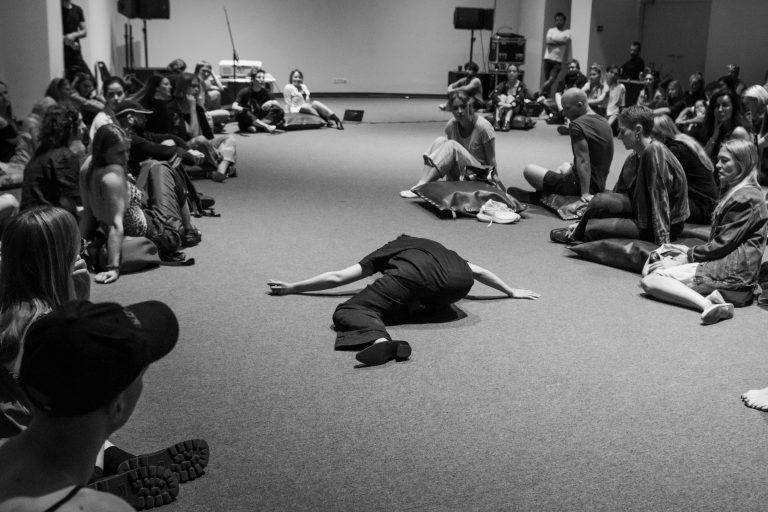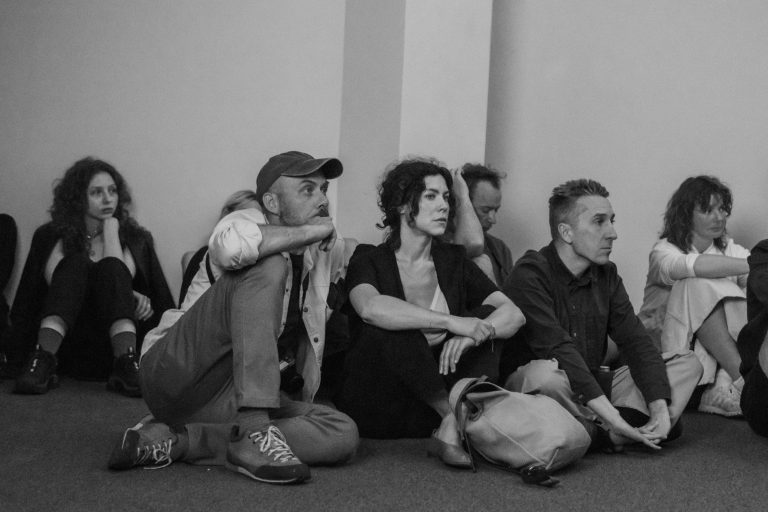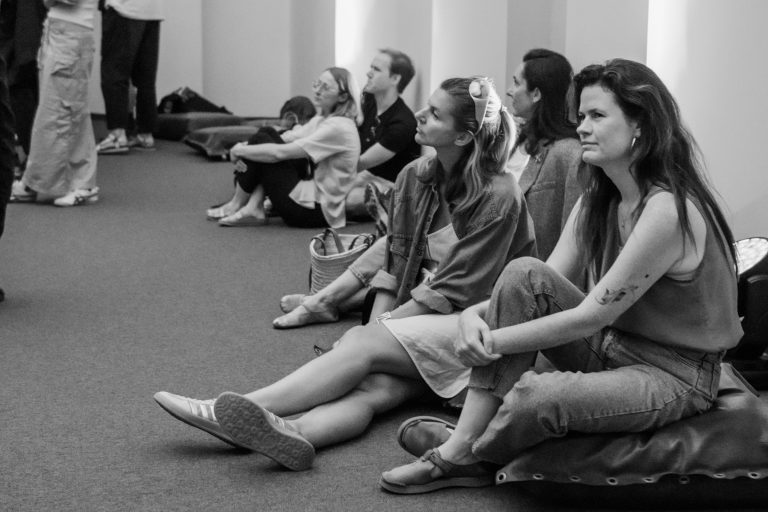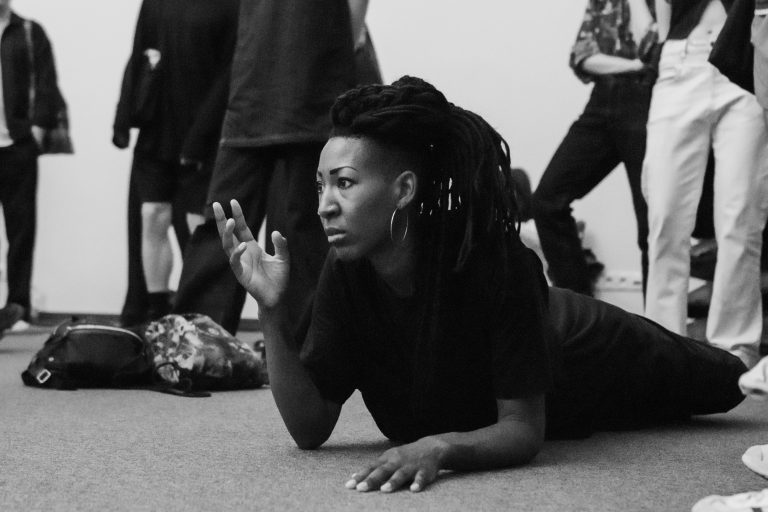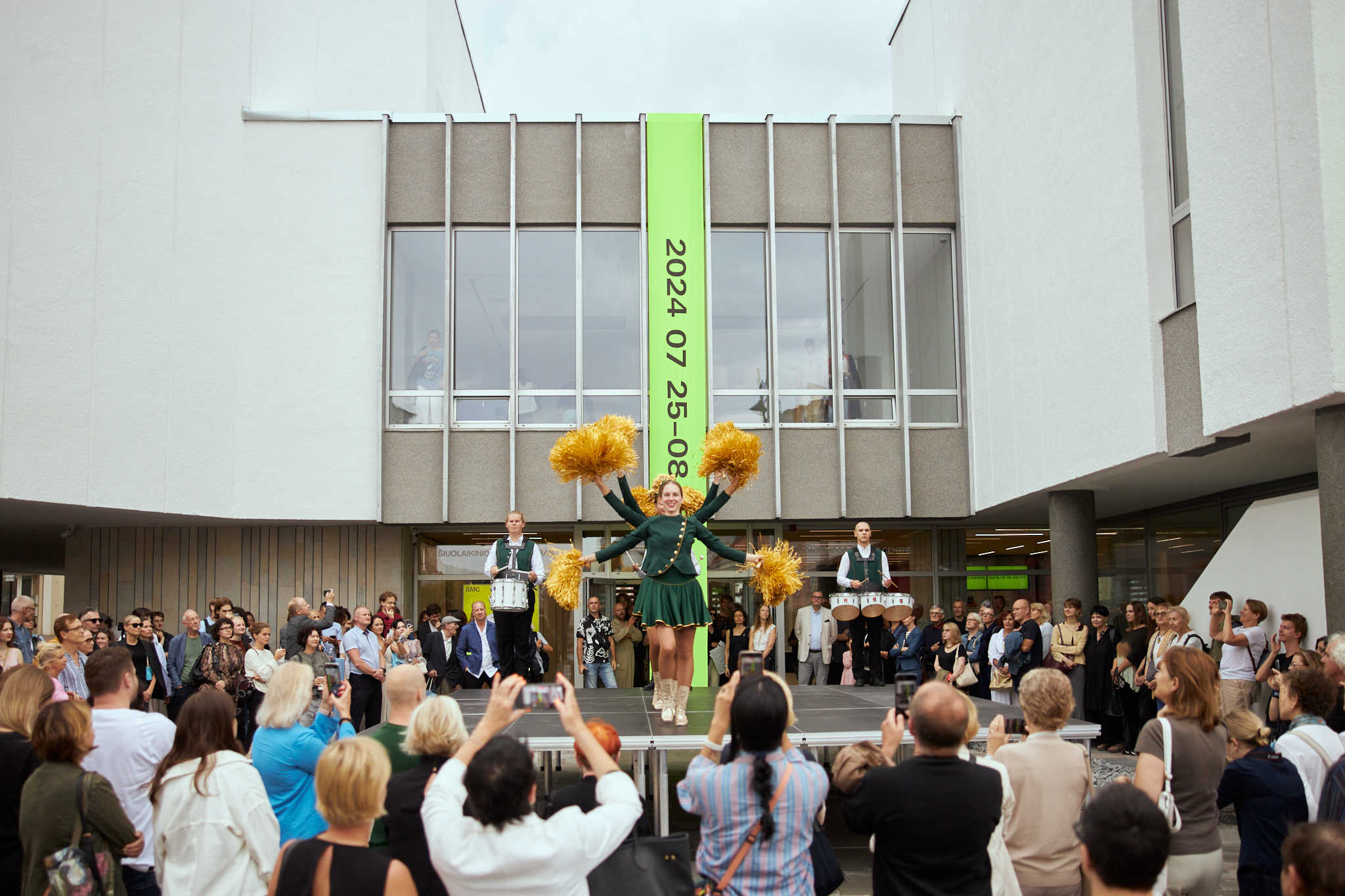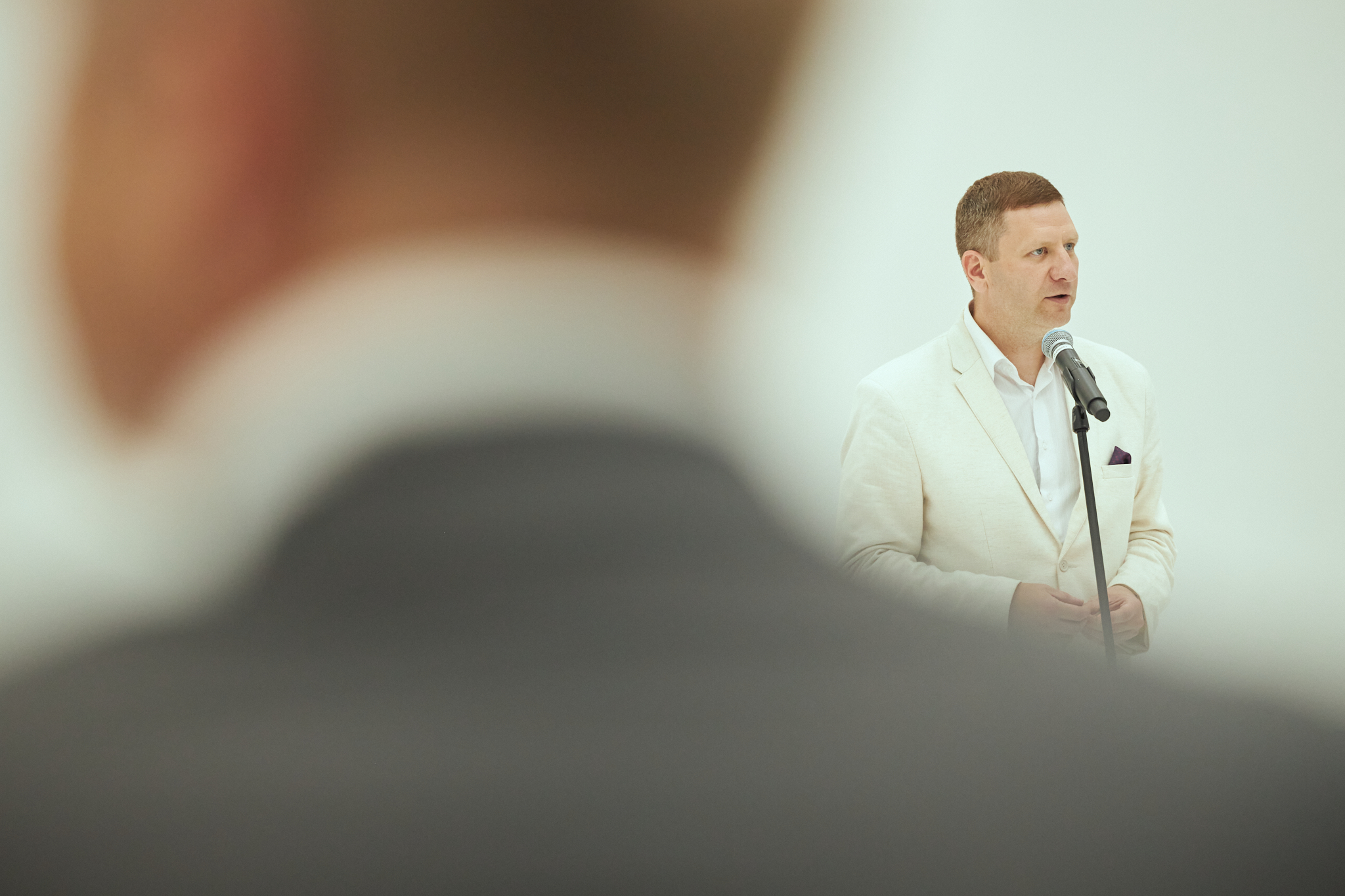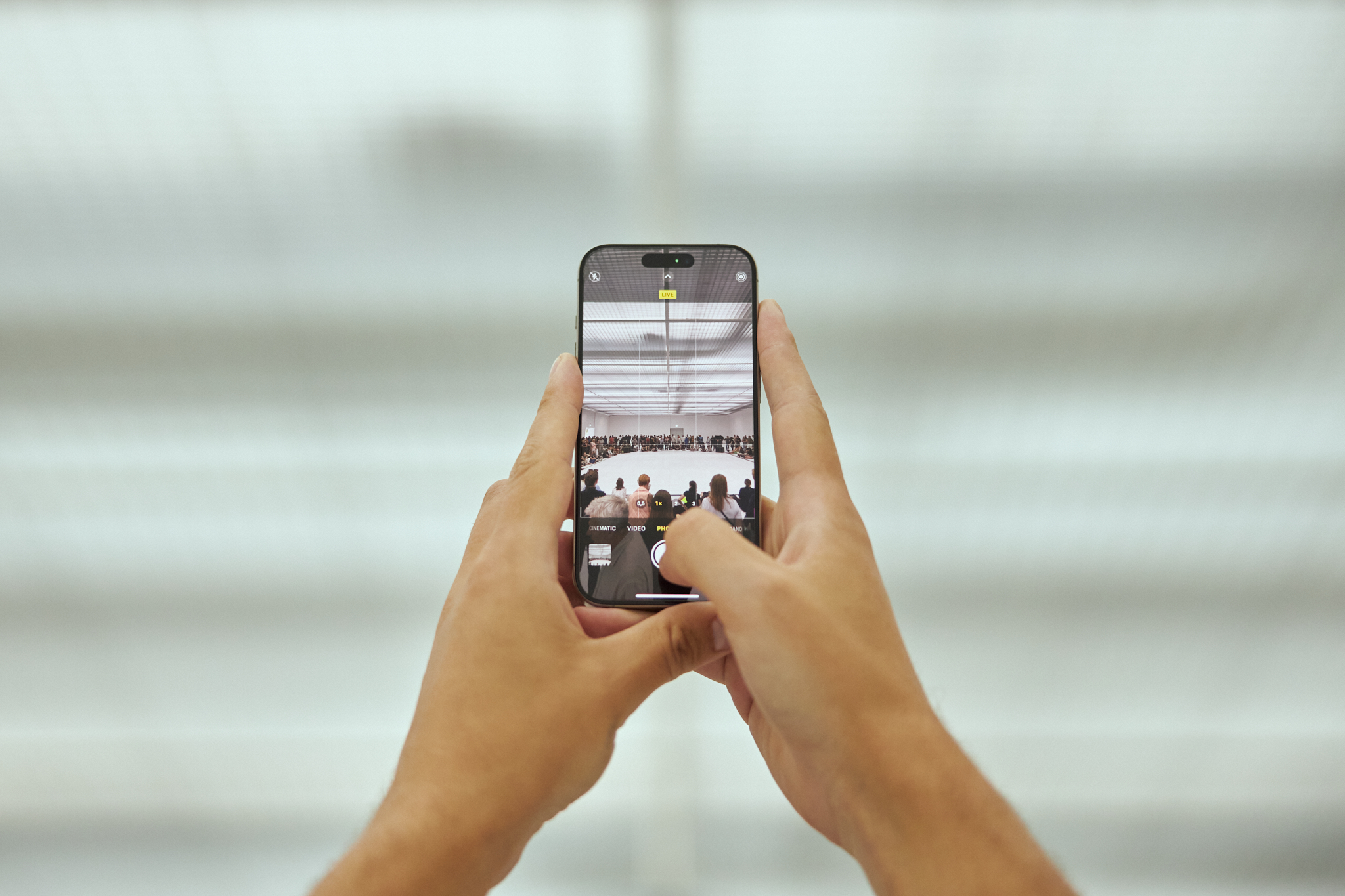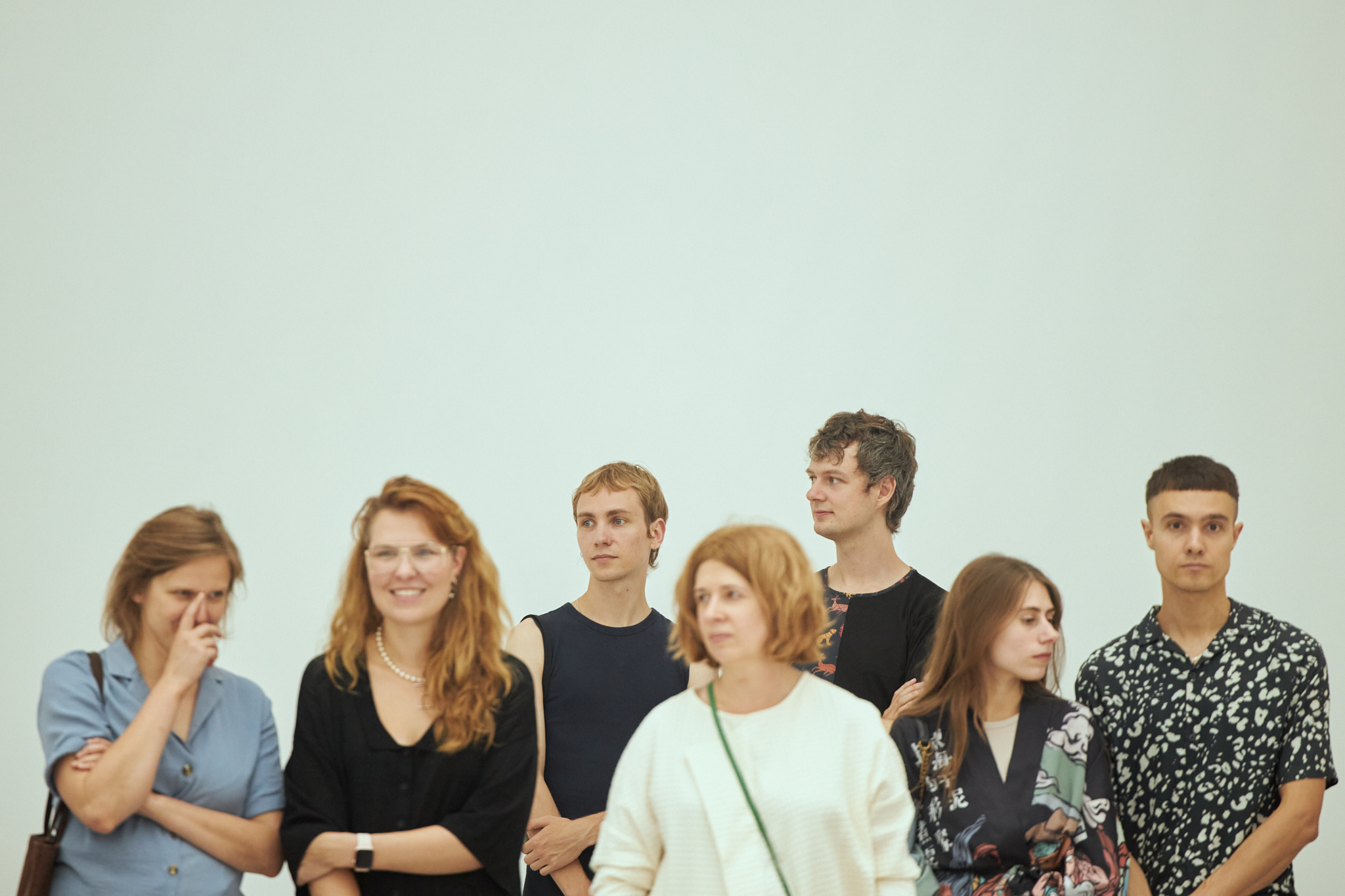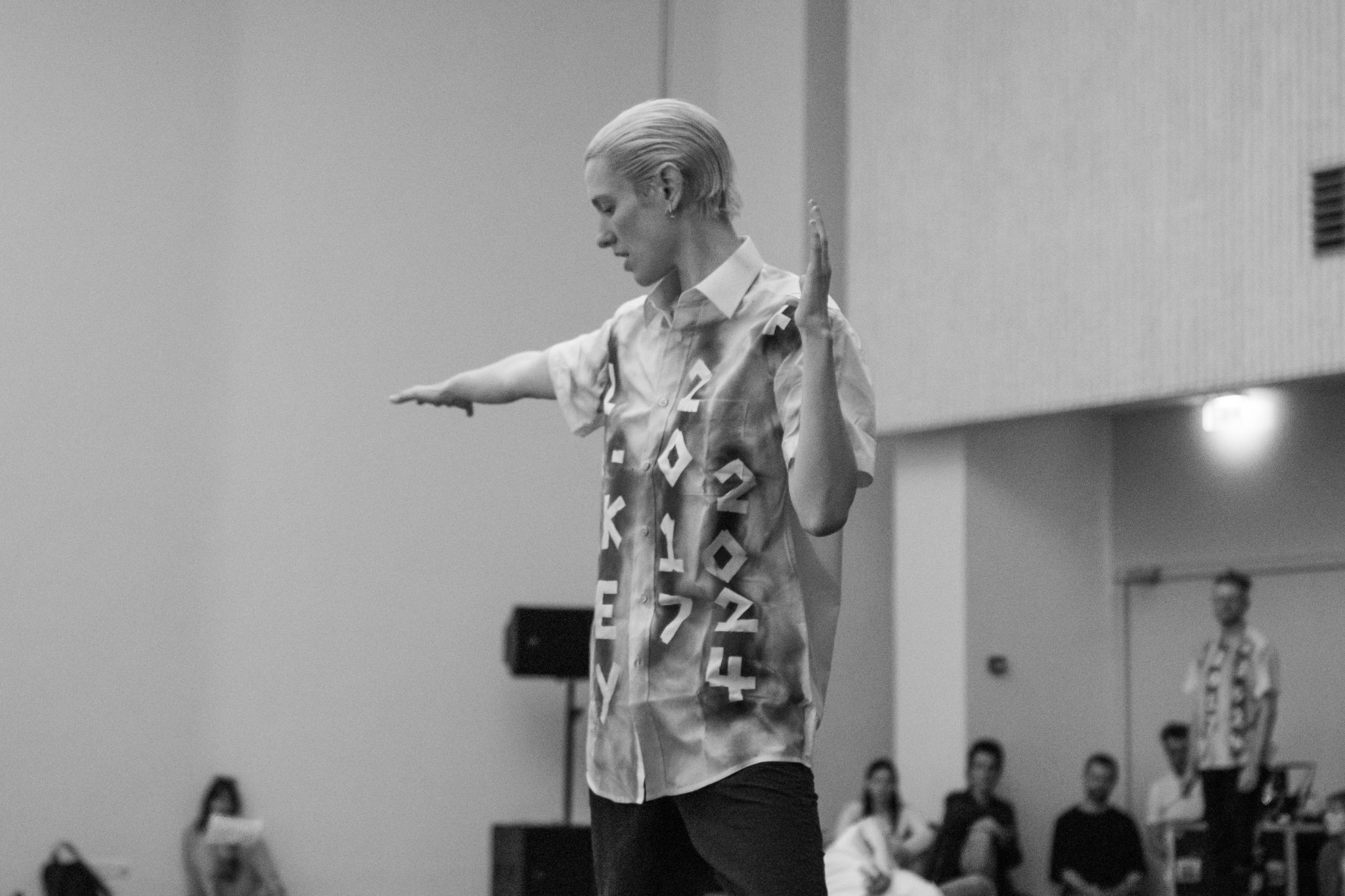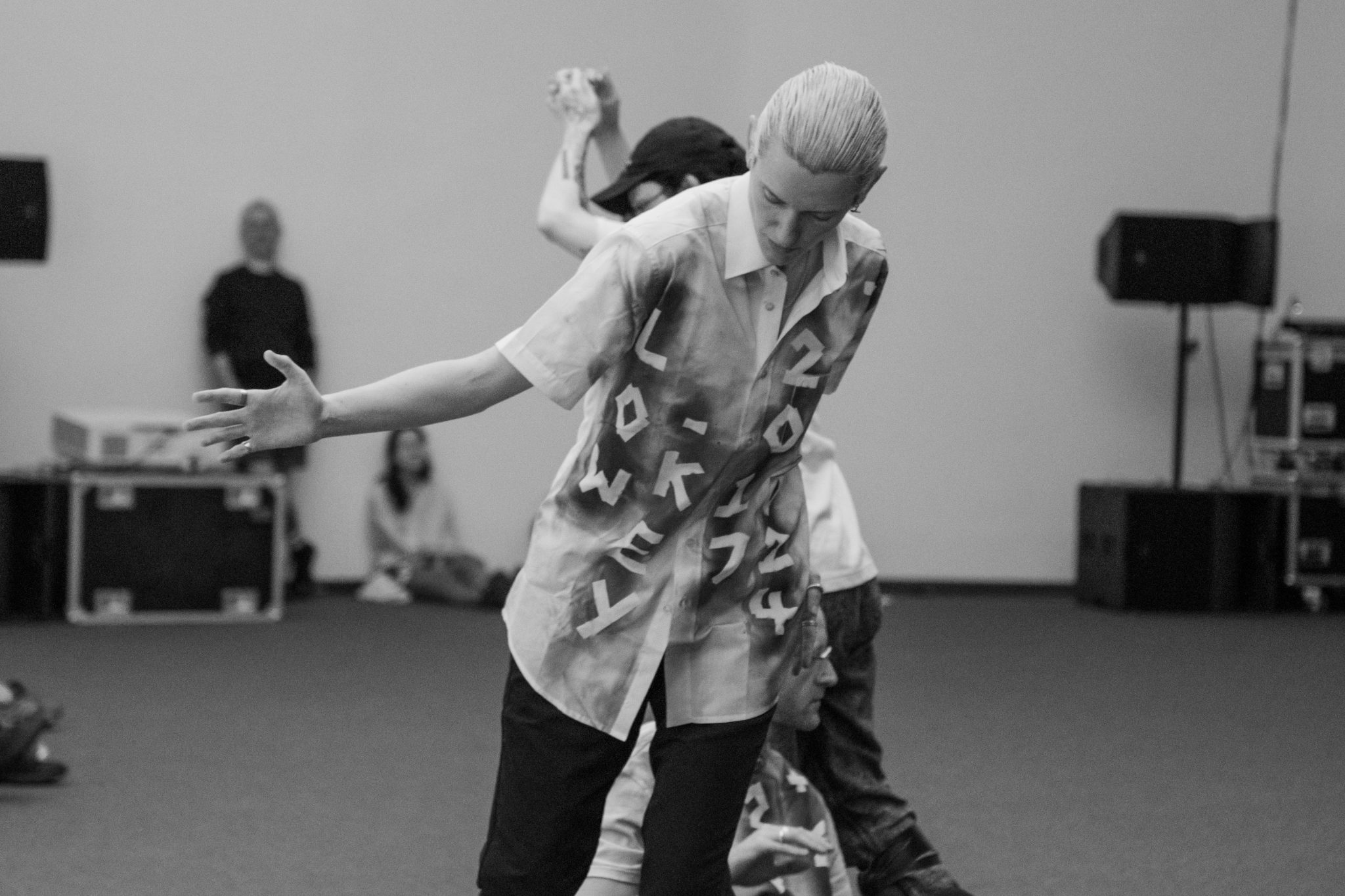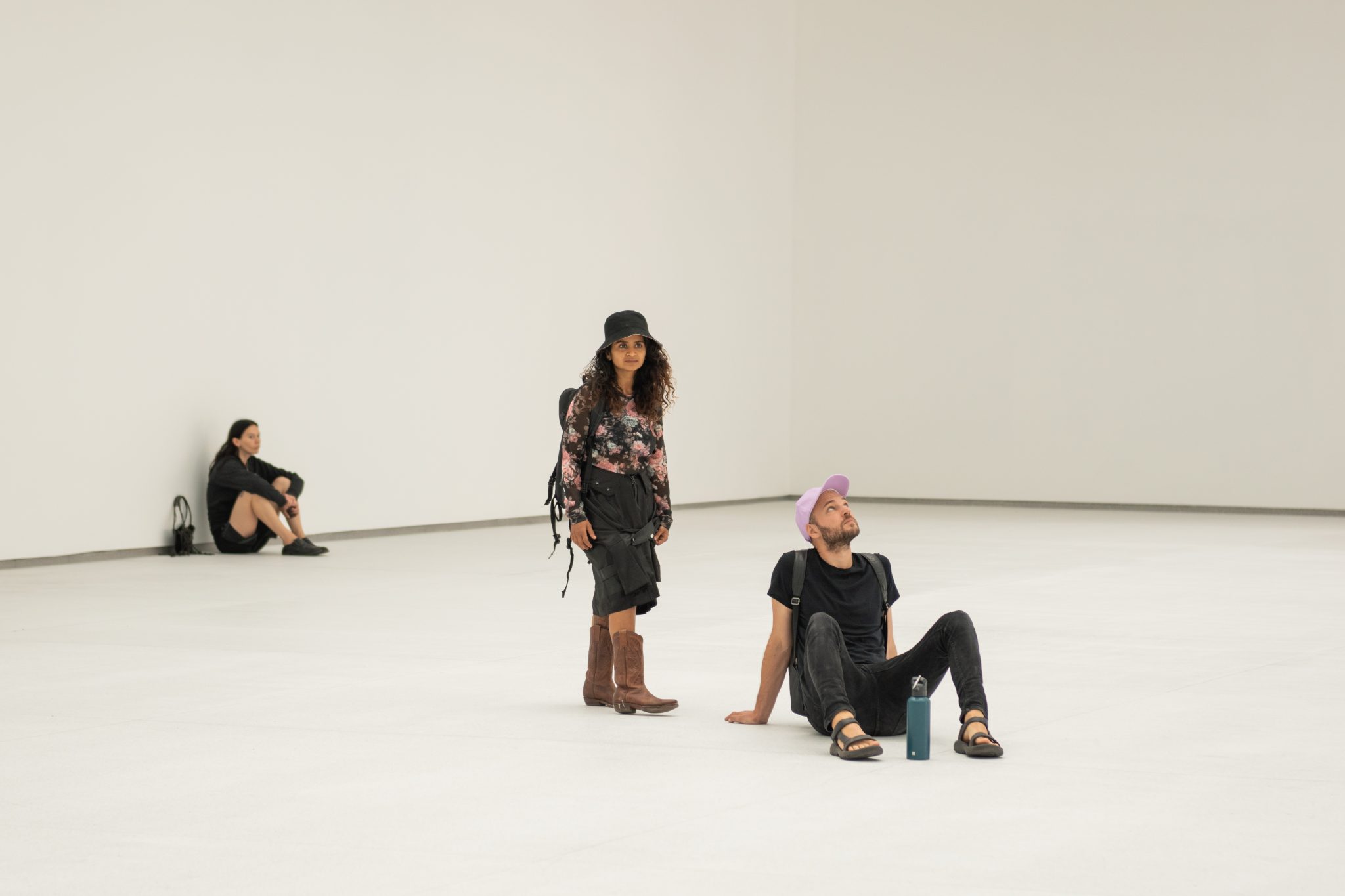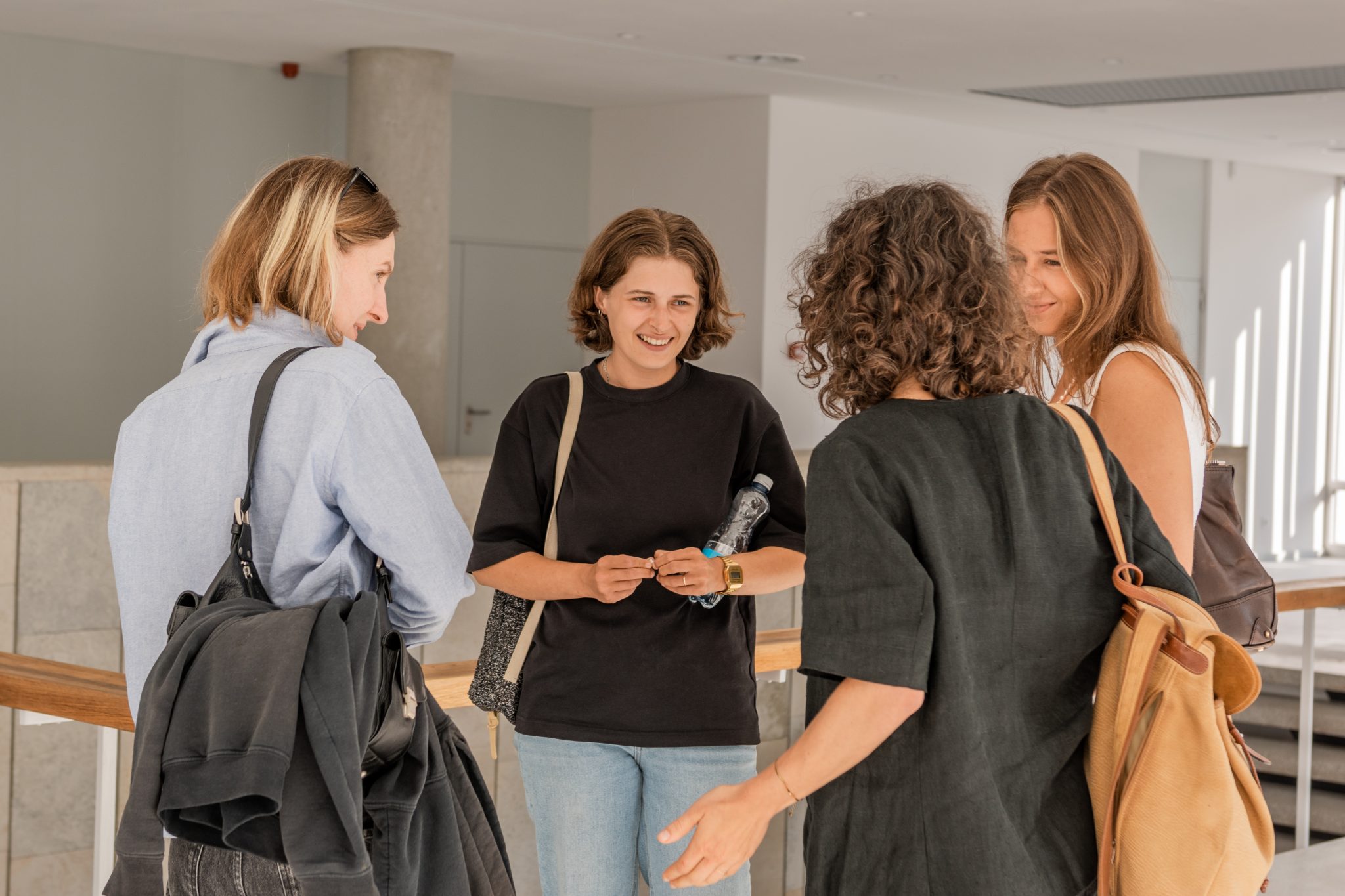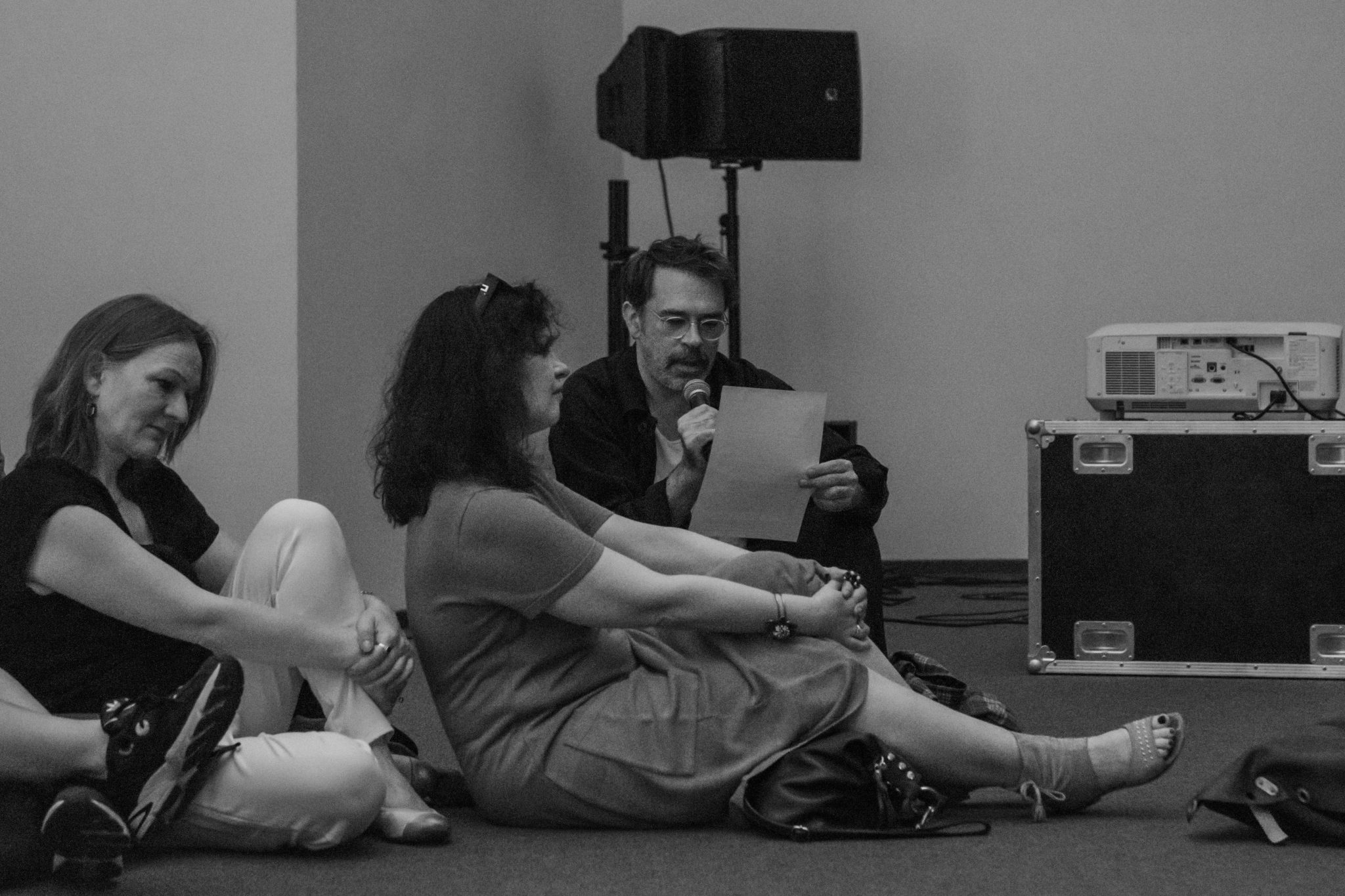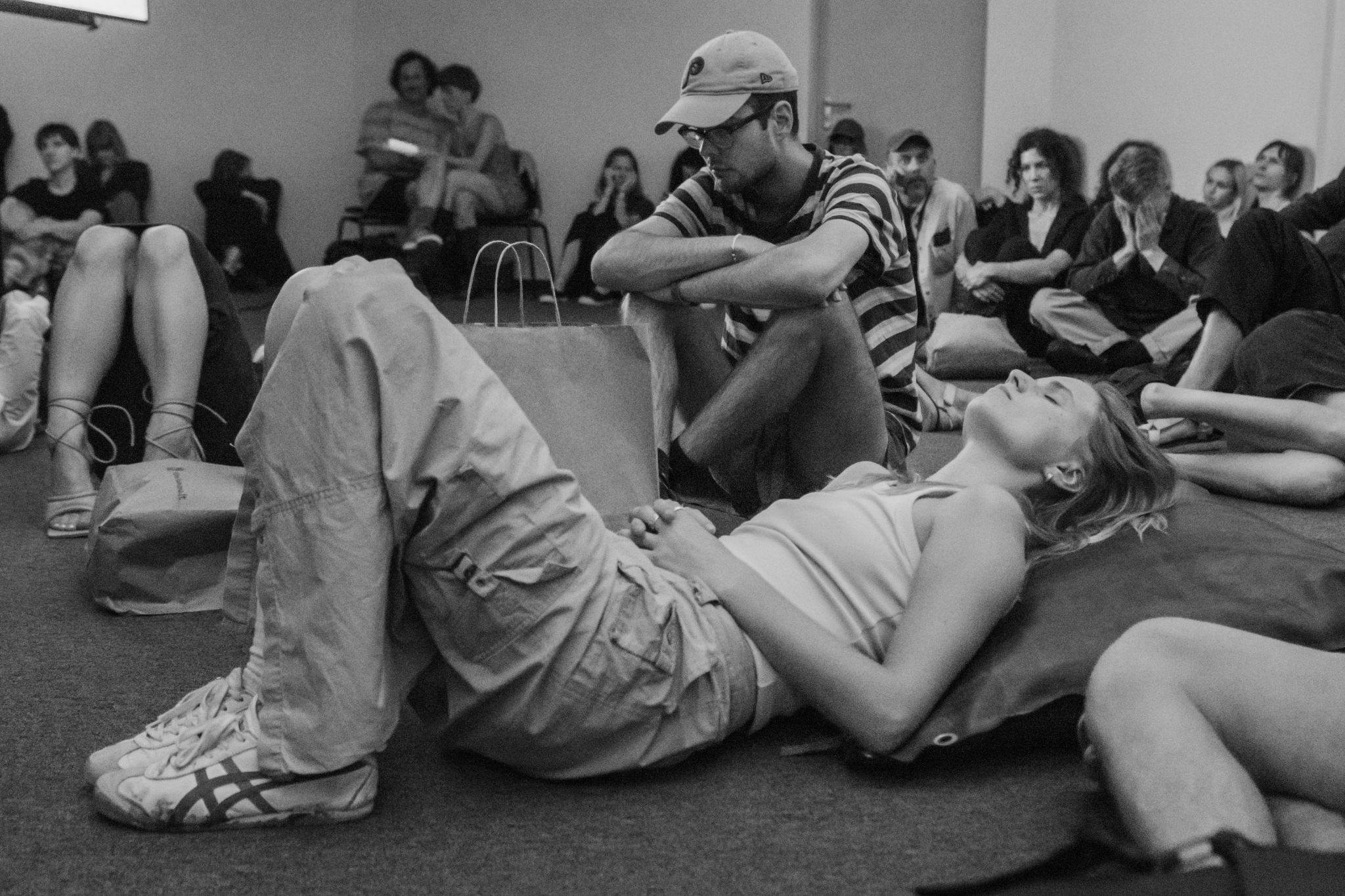
The ten-day sound and performance programme Days of Re-entry is the Contemporary Art Centre’s inaugural opening event following almost three years of major renovation of the building. The physical premises of the CAC have always been an essential part of the art centre’s identity, and an important feature of the architectural history of both Vilnius city centre and Lithuania. Days of Re-entry has, therefore, been conceived to showcase the institution’s newly renovated spaces and allow visitors to appreciate the beauty and harmony of their unique architecture. Guests will be free to wander through the empty exhibition halls, foyers, and other public spaces.
The soundscape of Days of Re-entry comes from past projects, major exhibitions, and sound installations presented at the CAC, without the display of any physical works. The intention is to pay tribute to the exhibition centre, designed by the renowned architect Vytautas Čekanauskas in the 1960s. With its completely renewed technical infrastructure and new interior, the CAC building, a prime example of modernist Lithuanian architecture, enters a new phase of its life. The new design, undertaken with care and responsibility by the architects Audrius and Marina Bučas, respects the legacy of both Čekanauskas and Valdas Ozarinskas, the CAC’s long-time architect.
Two days of the project will be dedicated to audience gatherings, performance art, and other artistic events.
25 July – 4 August
Antanas Dombrovskij – Memory of the Walls, 2024
Sound installation in the CAC building
Soundtrack duration – 39 min 48 sec
Concept: Kęstutis Kuizinas
Soundtrack composer: Antanas Dombrovskij
Memory of the Walls is a 40-minute compilation of soundtracks from exhibitions, installations, concerts, performances, interviews and other sonic material that has been played in the CAC’s spaces over the last three decades.
Featuring excerpts from the following recordings:
00:00 Kazys Varnelis – Perkūnas (Thunder). 2016
02:12 Shilpa Gupta – Untitled. 2009. (Sound of the iron gates recorded at the exhibition Generation in Transition. New Art from India)
04:04 Artūras Raila – It is a great and difficult task for an artist to dub a motorcycle …motorcycle. 1997
04:39 Sebastián Diaz Morales – Insight. 2012
05:52 Linas Rimša – for the exhibition project Lifting Down by Gintaras Kuginys and Linas Rimša. 2003
07:04 Vladimir Tarasov – Inside Out. 2008
09:02 Arthur Jafa – Akingdoncomethas. 2018
12:30 Arturas Bumšteinas – Ēcheîa. 2017
15:15 Maxim Tyminko – Five Lyrical Songs about Physics. Fifty Visual Artists and Two Art Critics Sing with Accompaniment of a Grand Piano and a Theremin. 2009
17:10 Valdas Ozarinskas in collaboration with Artūras Šilalė and Girdutis Jakaitis – Formalism: failures. 2010
18:18 Vaiva Grainytė, Lina Lapelytė, Rugilė Barzdžiukaitė – Have a Good Day! 2011
22:26 Liam Gillick – The Light is no Brighter at the Centre. 2017
27:14 João Penalva – Wallenda. 1997-–1998
28:42 Jurgis Paškevičius – Alternating Current. 2021
30:00 Monolake – Aviation. Gravity. 2001
32:40 Lina Lapelytė – Yes, really! 2019
33:17 George Maciunas’ interview with Larry Miller. 1978
34:39 Lina Lapelytė – Yes, really! 2019
35:56 Martin Creed – I Can’t Move. 2000
37:26 Chicks on Speed – Live at the CAC. 2007
38:34 Nomeda and Gediminas Urbonas – Ruta Remake. 2004
ANTANAS DOMBROVSKIJ is a sound artist and sound engineer and co-author of numerous musical projects, creating music for theatre, film and dance. For many years he worked as a night watchman at the CAC and actively monitored the institution’s activities. Among his best known musical projects are Gana2, Tiese, Banachtarski, Twentytwentyone, and Weld Mignon.
LIVE PERFORMANCE PROGRAMME
26 July
18:00
CAC main entrance
Artūras Raila – Approved, 2024
Performance
Performers: Percussion section (Karolis Jurgaitis, Džiugas Daugirda, Ovidijus Kutniauskas) and majorettes Kornelija Tamašauskaitė, Aurika Vasiliauskaitė, Jonė Vasiliauskaitė, Patricija Juknevičiūtė of the Kaunas wind orchestra Ąžuolynas.
Choreography: Dainius Bervingis
For Days of Re-entry Artūras Raila has created a new iteration of his 1998 performance Cancelled. Originally conceived for the 7th Baltic Triennial: Cool Places, the artist’s intention was to relocate the headquarters of the Lithuanian Alliance of Nationalist-Socialist Unity, led by the radical right-wing party Mindaugas Murza, from Šiauliai to the CAC’s Fluxus Cabinet, where visitors would see a display of newspapers, a flag and other Fluxus paraphernalia. The CAC did not approve of the proposed format and the project was not realised in this form. Instead, visitors encountered a poster emblazoned with the word ‘Cancelled’, and were greeted by majorettes and percussionists from the Trimitas wind orchestra. This time, visitors will be led through the newly renovated spaces of the CAC building by members of the Kaunas wind orchestra Ąžuolynas, while the performance itself, which has been officially agreed and accepted, qualifies for the title Approved.
ARTŪRAS RAILA began his career as a sculptor and went on to develop a practice that manifests in a variety of interdisciplinary projects, combining objects, installation, photography and performance art. By leaving room for contingency – collaborating and engaging different social groups or subcultures – he creates a specific dynamic in which art is intertwined with life, and the normative nature of identities, institutions and artistic practice itself is questioned.
Since 1988, Raila has participated in numerous exhibitions and symposia in Lithuania and various European countries. His works are included in the collections of the Lithuanian National Museum of Art and the MO Museum in Vilnius. In 2018, Raila was awarded the Lithuanian National Prize for Culture and Arts. He is a professor in the Department of Photography and Media Art at Vilnius Academy of Arts.
19:00
CAC Great Hall
Michele Rizzo – HIGHER xtn., 2018
Performance
Concept and choreography: Michele Rizzo
Performers: Max Göran, Michele Rizzo, Antonia Steffens, Júlia Vavra, Milena Weber
Music: Lorenzo Senni
HIGHER xtn. – originally developed for the Stedelijk Museum Amsterdam – is an adaptation of Rizzo’s 2015 performance HIGHER, which explores how nightclubs offer dancers a space for self-expression and communion. Drawing from the work of theorists Julia Kristeva, Boris Groys, and Mihaly Csikszentmihalyi, Rizzo considers how dance can facilitate states of flow, totality, and transcendence, and acknowledges the connection between dance and para-religious practices. He is particularly interested in the cathartic and transformative power of techno music, whose repetitive rhythms can temporarily blur the perceived boundaries of the body. HIGHER xtn. is also attentive to the important role that nightclubs play as gathering spaces for marginalised groups, and to how clubs foster public intimacy while providing individuals with an environment in which to explore their identities.
In HIGHER xtn., dancers negotiate the boundaries between the self and the collective. As the repetition of the choreography reconfigures the group into a single body, Lorenzo Senni’s hypnotic electronic soundtrack intensifies in tandem with the dancers’ movements.
MICHELE RIZZO is an Italian artist who has been based in Amsterdam since 2007. He studied choreography at the SNDO School for New Dance Development, and later visual arts at the Dirty Art Department Master’s programme of the Sandberg Instituut in Amsterdam. His research sits at the intersection of performing and visual art, merging sculpture, dance and performative elements. In recent years, Rizzo has produced a series of works for theatres and exhibition spaces, which engage with the aesthetic translation of club culture and raving aspects. In 2018 Rizzo presented HIGHER xtn. at the Stedelijk Museum Amsterdam, which was acquired by the museum for its permanent collection. HIGHER xtn. has been shown extensively, including MoMA PS1, New York; Museum of Contemporary Art Kiasma, Helsinki; Fondazione Sandretto Re Rebaudengo, Turin; Zachęta National Gallery of Art, Warsaw; MAXXI, Rome; and La Casa Encendida, Madrid among others.
3 August
12:30 – 21:00
Cinema Hall
Choreographic Devices
One-day performative symposium
Curators: Murat Adash, Ofri Cnaani, Edgar Schmitz, Sara Sassanelli
Choreographic Devices is an annual event series that activates the choreographic as a methodology for trans-disciplinary forms of inquiry and rehearsal. Bringing together contributors from across an expanded ecology of practices, this multi-format forum speculates on and with choreographic arrangements and their complex modes of co-production. Choreographic Devices tests how material assemblages, organisational forms, and modes of being alongside each other might be choreographed otherwise. For this iteration, contributors include Murat Adash, Eglė Budvytytė, OMSK Social Club, Ofri Cnaani, keyon gaskin, Paveldo Institutas, Tarren Johnson and Joel Cocks, Agnė Jokšė, Michael Kitchin, Raimundas Malašauskas, Sara Sassanelli, Edgar Schmitz, SERAFINE1369, Esther Siddiquie, Himali Singh Soin, Eve Stainton, Vaida Stepanovaitė, Protektorama toxica.
Schedule:
12:30 – 13:15
lowkey with Eve Stainton, Michael Kitchin, Sara Sassanelli
lowkey involves artist Eve Stainton, producer Michael Kitchin and curator Sara Sassanelli working with music and dance as ways to engage with togetherness and separation. For Choreographic Devices they revisit this work from 2018, framing it as a space for movement that sits between a rehearsal and a performance. lowkey is soundtracked by a selection of electronic music from previous iterations.
lowkey performances between 2018 and 2019 included guest performances by Nitetrax, Rowdy SS, Rukeya, Fernanda-Munoz Newsome.
13:15 – 14:00
Lunch break
14:00 – 16:00
alterity, alterity with Murat Adash, Eglė Budvytytė, Protektorama toxica, Himali Singh Soin
In this session, both live and pre-recorded contributions engage with shape-shifting elements of movement, language, sound and storytelling as vehicles to traverse altered states of corporealities. Distinct acts of moving, speaking, singing, and narrating juxtapose one another – collectively utilising bodily practices to rehearse other ways of looking and listening to a multiplicity of emergent and constructed relationalities, intimacies, futurities and cosmologies. By loosely exploring the notion of alterity, each contribution uniquely touches on a range of related themes, including darkness, permeability, translucency, alienness and constructed identities. Together, they navigate across provisional natures of identities, realities and subjectivities to reflect on altered forms of knowing, sensing, feeling and thinking.
16:00 – 16:30
Break
16:30 – 18:30
A habit is a form. A thought is a form. A friendship is a form.
Ofri Cnaani and Vaida Stepanovaitė with Agnė Jokšė, Esther Siddiquie, Paveldo institutas, OMSK Social Club, Tarren Johnson and Joel Cocks
The anonymous collective Invisible Committee once suggested that in times of multiple breakages, we need mutable forms, not affixed institutions. Life, they say, whether biological, singular, or collective, is a continual creation and interaction of forms: ‘A habit is a form. A thought is a form. A friendship is a form.’ Artist Ofri Cnaani and curator Vaida Stepanovaitė invited artists and collectives to rethink social and institutional spaces as inherently choreographic acts and to weave potential openings in their operations. Together, they will respond with short interventions using text, voice, image, and movement. A series of offerings will explore the form’s momentum and its inseparability from other configurations through methods of doing rather than knowing and poke at the calcified imaginaries and structures of knowledge.
18:30 – 19:30
Dinner break
19:30 – 21:30
I would like to invite you to make a proposal for the next one with keyon gaskin, Raimundas Malašauskas, Edgar Schmitz, SERAFINE1369
About the participants:
MURAT ADASH is an artist and researcher whose expanded choreographic practice is preoccupied with notions of thresholds. Working across performance, moving image, installation, and writing, Adash employs dance and movement to probe and rethink edges between intra-bodily registers. Beyond the idea of animal mimicry, Adash has been developing a choreographic research body on the phenomenon of ‘camouflage’ understood as a spatio-temporal act: a process through which bodies are negotiated in correspondence with their animate, surrounding environments, processes that are intrinsic to choreography as well.
EGLĖ BUDVYTYTĖ is an artist based in Vilnius and Amsterdam, working at the intersection between visual and performing arts. She approaches movement and gesture as technologies for a possible subversion of normativity, gender and social roles and for dominant narratives governing public spaces. Her practice, spanning songs, poetry, videos and performances, explores the persuasive power of collectivity, vulnerability and permeable relationships between bodies, audiences and the environments.
OFRI CNAANI is an artist and researcher who works across performance and media. Her work has been shown at Tate Britain, London; Venice Architecture Biennale; Metropolitan Museum of Art, New York; Inhotim Institute, Brazil; PS1/MoMA, New York; BMW Guggenheim Lab, New York; and Kunsthalle Wien, Vienna. Cnaani is a guest professor at TU Wien and a research fellow at the Amsterdam School for Cultural Analysis (ASCA) at the University of Amsterdam. She recently completed a project at the International Space Station.
KEYON GASKIN prefers not to contextualise with their credentials
JOSH ANIO GRIGG is a sound designer and multimedia artist living in London. He often works on the creation of theatre, dance and art installations. Josh uses digital sound processing, turning recordings or live audio into sound environments. He also makes music based on his personal history of dance music and electronic arts experiments.
TARREN JOHNSON is an American artist and choreographer, and has collaborated with Joel Cocks, a New Zealand artist and designer, since 2016. Their work explores cultural reproduction and fragmented memory through various mediums. They focus on transposing contexts, allowing performance to exist in an incomplete and indeterminate state.
AGNĖ JOKŠĖ is an artist and writer based in Vilnius. Using the tools characteristic of autoethnography, Jokšė tells stories in which her experiences and past events related to contemplations of love, intimacy, and friendship intertwine with imaginative reflections on the world surrounding these events. Recent projects include a solo exhibition at Editorial, Vilnius, research at Friche du Palais de Tokyo, and presentations at GIBCA, Gothenburg; National Gallery of Art, Vilnius; Tallinn Art Hall, Tallinn; e-flux screening room, New York; CCA, Glasgow; Cell Project Space, London; Artists’ Film International, Whitechapel Gallery, London; Baltic Triennial 14: The Endless Frontier, Vilnius; NAC, Nida; and Mimosa House, London.
MICHAEL KITCHIN is a London-based producer, project manager and fundraiser, working across dance and live performance. He has producing relationships with artists Eve Stainton, Marikiscrycrycry, Katy Baird, Thick and Tight, Chisato Minamimura, Louise Ahl and Moxie Brawl. He has previously produced for Fest en Fest, Livia Rita, Samir Kennedy, Elinor Lewis/Joe Garbett and Freddie Wulf. He also co-produced the collaborative performance platform CAJ COLLAB with Eve Veglio-Hüner.
RAIMUNDAS MALAŠAUSKAS has co-written an opera libretto, co-produced a television show, served as an agent for dOCUMENTA (13), curated oO, the Lithuanian and Cyprus pavilions at the 55th Venice Biennale, and kept occurring under hypnosis.
OMSK SOCIAL CLUB is an artistic practice centred around a unique role-playing methodology; Real Game Play, collective immersion and speculative worlding. They have exhibited across Europe in various institutions, galleries, theatres and off-sites such as Martin Gropius Bau, Berlin; House of Electronic Kunst Basel; HKW, Berlin; Mudam Luxembourg; La Casa Encendida, Madrid; and Light Art Space Berlin. They have been included in CTM Festival, Berlin in 2021; 34th Ljubljana Biennale of Graphic Arts in 2021; 6th Athens Biennale in 2018; Transmediale Festival, Berlin in 2019; The Influencers, Barcelona in 2018; and IMPAKT Festival, Utrecht in 2018. In 2021 they co-curated the 7th Athens Biennale with Larry Ossei-Mensah.
PAVELDO INSTITUTAS (The Institute of Heritage) is an independent collective of researchers and artists founded in Kaunas, Lithuania, focusing on the themes of heritage and memory. The collective employs archiving and curating histories as an artistic strategy that opens up the possibility of re-activating knowledge, deconstructing the historical narrative and looking at it as a nuanced spectrum. Members of Paveldo institutas include Lukas Mykolaitis, Severina Venckutė, Mikas Zabulionis, Margarita Žigutytė, and guests.
PROTEKTORAMA TOXICA (fed and cared for by JP Raether) is an Artificial Identity and part of a group of WorldWideWitches that investigate people’s obsession with their smartphones. They address the relationship of the body to the screen, explore portable computer systems as body prosthetics, and trace the materiality, manufacturing, and mines of information technologies. Protektorama appear as humanoid beings in performative, distributed social interventions, engaging an elaborated vocabulary. In their appearances, they work to demonstrate that in every common reality the potential for another reality is always present.
SARA SASSANELLI is Curator of Live at the Institute of Contemporary Arts (ICA) and associate of alternative education programme CONDITIONS. They programme experimental dance and music for the ICA’s Live programme with a focus on emerging artist practices. They are interested in the collective, enthusiastic and hedonistic cultures that assemble around the practice of raving and how this emerges in multi-disciplinary practices. They are currently working on a six-month programme titled ‘this dark gleam’ (ICA, 2024) researching artists who work with formal technique, social dance, pop-culture and punk sensibilities.
EDGAR SCHMITZ’S architectures, films and soundtracks are concerned with developing modes of withdrawal. His work has been the subject of solo presentations at Netwerk Aalst; Shanghai Himalayas Museum; Cooper Gallery, Dundee; FormContent, London; and the ICA, London and has featured in A.C.A.D.E.M.Y at Van Abbemuseum, Eindhoven; No Soul for Sale at Tate Modern, London; and British Art Show 7: In the Days of the Comet, Hayward Touring; and others. He founded the CHOREOGRAPHIC and ANIMATE ASSEMBLY research clusters at Goldsmiths, University of London, and directs the Art Research MPhil/PhD Programme there.
SERAFINE1369 is an artist, dancer and body-focused researcher who works with dancing as a philosophical undertaking, a political project with ethical psycho-spiritual ramifications for being-in-the-world; dancing as intimate technology. They work with/in the context of the hostile architectures of the metropolis towards moments and states of transcendence.
ESTHER SIDDIQUIE is a Bochum-based artist working from a choreographic practice. In her research she explores potentialities of bodily encounters with archival materials as a means of knowledge production and develops a somatic practice of archival inventorying. She is a PhD candidate at Goldsmiths, University of London in Advanced Practices.
HIMALI SINGH SOIN is a writer and artist based between London and Delhi. She uses metaphors from outer space and the natural environment to construct imaginary cosmologies of interferences and entanglements. In doing this, she thinks through ecological loss and the loss of home, seeking shelter somewhere in the radicality of love. Her current research with her collective Hylozoic/Desires focuses on the metaphysics of salt, which began at DesertX in California last year and will continue in 2025 at Tate Britain and Somerset House in London.
EVE STAINTON is an artist and choreographer born in Manchester, living in London. They create multi-disciplinary performance worlds that hold movement practices, welded steel, digital collage, and other invisible forces like waves, imagination and drama. Their research is rooted in community, and interested in how differently marginalised people experience and come into relationship with power structures and convention. Often working with codes, tropes and the absurd, they stage clunky physical negotiations, or reveal ‘behind the scenes’ mechanisms of working together, as a way to question a moral idea of perfection, seamlessness and elegance.
VAIDA STEPANOVAITĖ organises, researches, curates, and writes in arts and academia and beyond. She is interested in the desire to collectivise otherwise under inhospitable conditions and to negotiate mutable forms of togetherness. She is conducting practice-based doctoral research and teaches at the Department of Visual Cultures at Goldsmiths, University of London.

















